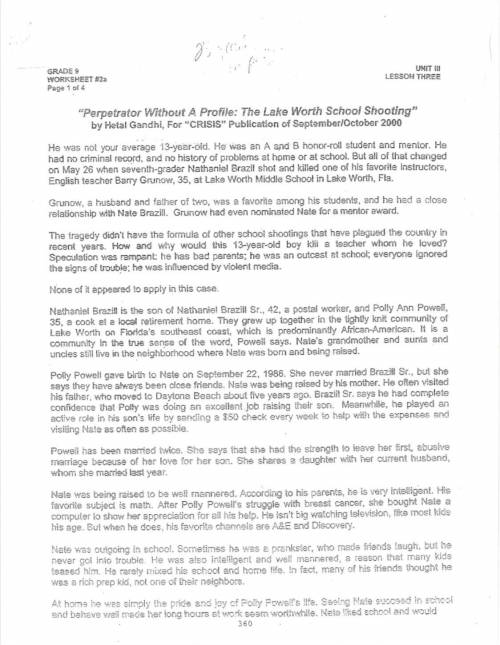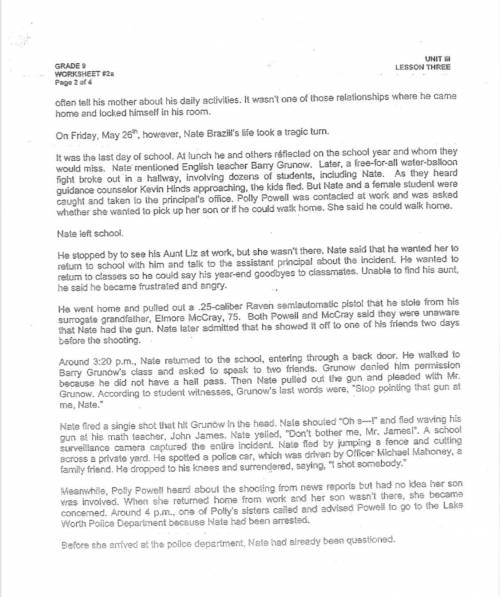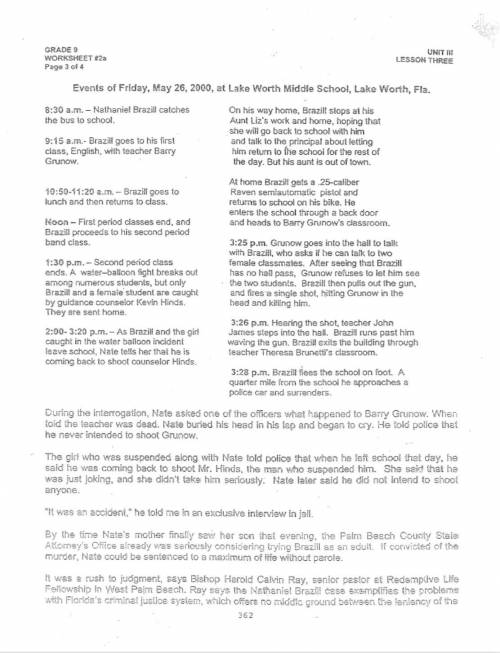
1. who is the voice that tells the story?
2. what can you infer about the speaker based on references to the text?
3. what is the time, place, current situation, context in which the author is writing?
4. who is the audience- the group of readers to whom the piece is directed?
5. what does the speaker want the audience to think or do as a result of reading this text?
6. how does the speaker try to spark a reaction in the audience?
7. what techniques are used to achieve a purpose:
Text Feature: (Diagrams, charts, graphs, pictures &captions, polls, videos)
Text Structure: (cause/effect, sequence, flashback, describe/attribute, compare/contrast)
8. what is the main idea of the text?
9. how does the author present the subject?
10. what is the attitude of the author?





Answers: 3
Another question on English

English, 21.06.2019 16:00
When gatsby was in europe after world war i and circumstances forced daisy and him to face unpleasant realities about their relationship,
Answers: 1

English, 21.06.2019 19:00
Read this excerpt from tim o’brien‘s “ambush” “i had already pulled the pin on a grenade. i had come to a crouch” which literary device is most clearly shown in this excerpt?
Answers: 1

English, 21.06.2019 20:10
Which piece of information about doris lessing would more likely be found in the new york times article "doris lessing wins nobel prize in literature" than in the "doris lessing" biographical video? the opinion lessing has of the current political climate in south africa description of the home which lessing and her husband live in today
Answers: 3

English, 22.06.2019 06:30
Read the excerpts from "the royal house of thebes" and "the story of a warrior queen." "we are women," she told her sister. "we must obey. we have no strength to defy the state." "choose your own part," antigone said. "i go to bury the brother i love." "you are not strong enough," ismene cried. "why, then when my strength fails," antigone answered, "i will give up." she left her sister; ismene dared not follow her. —"the royal house of thebes" again and again the romans were defeated, till it almost seemed as if the britons really would succeed in driving them out of the country. boadicea herself led the soldiers, encouraging them with her brave words. "it is better to die with honor than to live in slavery," she said. "i am a woman, but i would rather die than yield. will you follow me, men? " and of course the men followed her gladly. —"the story of a warrior queen" how are the archetypes presented in these two passages different? the first passage shows antigone as a warrior, and the second passage shows boadicea as a tragic heroine. the first passage shows antigone as a tragic heroine, and the second passage shows boadicea as a sage. the first passage shows antigone as a rebel, and the second passage shows boadicea as a warrior. the first passage shows antigone as a villain, and the second passage shows boadicea as a sage.
Answers: 1
You know the right answer?
1. who is the voice that tells the story?
2. what can you infer about the speaker based on referenc...
Questions

Biology, 28.08.2019 16:20





History, 28.08.2019 16:20



Computers and Technology, 28.08.2019 16:20







Mathematics, 28.08.2019 16:20

Mathematics, 28.08.2019 16:20



English, 28.08.2019 16:20



